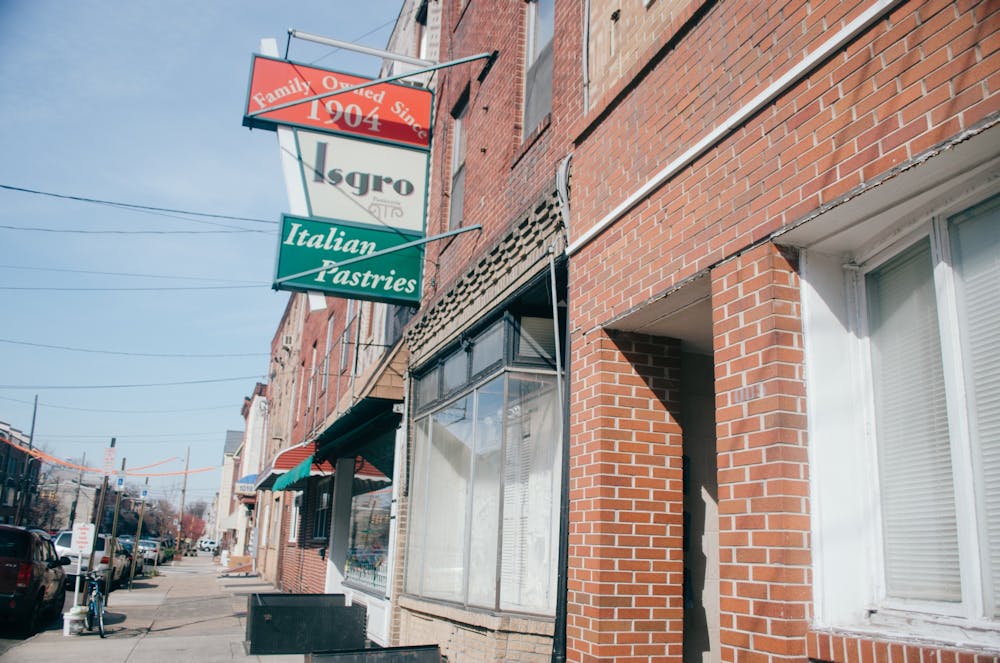It’s no secret that Philly is home to a variety of top–notch attractions. From Independence Hall to the world’s largest pizza museum, there’s no shortage of fun sites to visit within city limits. But for us Penn students, it’s far too easy to wind up stuck in the University City bubble.
Disappointed in my lack of knowledge about the place that I call home nine months out of the year, when it came time to decide on my New Year’s resolution I ditched 'working out more' and 'stop procrastinating'—my usual goals. Instead, I settled on 'see more of the city.' Determined to bring my goal to fruition, I turned to the internet to help me plan my trek across the Schuylkill. After typing ‘sightseeing in Philadelphia’ into my search bar and clicking through the results, I eventually stumbled upon Free Tours by Foot.

Free Tours by Foot offers a variety of name–your–own–price excursions here in the City of Brotherly Love. From historical tours of Independence Mall to insider tours that highlight Philly natives’ favorite hidden gems, Free Tours by Foot aims to provide clients with an inexpensive way to explore the city.
Browsing through their list of options, the words ‘Food Tour’ inevitably caught my attention. I opted to book a spot on the Italian Market Tour, which promised to showcase all of the “go–to” stops that America’s oldest and largest Italian market has to offer. Pulled in by the prospect of getting to eat some bomb meatballs, I paid the $3 registration fee and secured my spot.
I received an email from my guide, Jenn, the night before detailing where we were meeting, who I should look for, and what I should bring. Come tour day, I ubered to the Italian Market Visitor Center armed with a reusable bag for leftovers and $20 in cash to spend at the stalls. I went into the excursion expecting to spend two hours sampling some of Philly’s most mouthwatering Italian food—a front on which the tour definitely delivered. But what I hadn’t anticipated is that I would get a very valuable lesson about the history of the community as well.

We started the morning off right with a visit to Anthony’s Italian Coffee House. I sipped on a cup of their signature coffee and munched on a chocolate–covered strawberry from the shop next door as my guide launched into a story about the business’s long history. As it turns out, Anthony’s is one of the 3% of American family–owned businesses that have remained in business for more than three generations. First established as a fish market by Tommaso Anastasio, a Sicilian immigrant who arrived in the United States in 1906, Anthony’s has been a staple of the community through highs and lows.
The rest of the stops we made followed the same pattern: after our guide made her food recommendations, we had the opportunity to purchase whatever we’d like from each shop before we reconvened to hear more about the significance of the location. We walked the short distance from Anthony’s to Sarcone’s Bakery where I bought a slice of their famous tomato pie (for a whopping $2.50, I might add). Stepping back outside, my guide discussed how Sarcone’s has become one of the most beloved spots in the Italian Market, drawing lines of people that extend out the door on busy days. She also made a point to discuss the history of Ralph’s, the Italian restaurant next door, which was known to offer plates of spaghetti for a nickel during the Great Depression to struggling locals.

Next up, we trekked to Isgro Pastries to sample their famous cannolis which we ate on the steps of the nearby St. Paul Church. It was here that we learned about the religious and racial conflicts that have marked the history of Italian Market and about the attempts that have been made in recent decades to reconcile differences between these groups.

My favorite part of the tour was the stop we made to Villa de Roma, where we watched the owners make their classic meatballs and red gravy before digging into the delicious finished product. My friend Paige, a self–proclaimed meat–lover who also came on the tour, went as far as to say that they were the best meatballs she’d ever had. Talking with the owners about their role in the community, we also found out more about their participation in the annual Italian Market Festival and about all of the long–standing traditions that characterize the event.
We finished out the tour with a stroll down the more traditional market portion of 9th Street. Passing by the vendors selling everything from fresh produce to kettle corn, Jenn highlighted how this area was more reminiscent of the early Italian Market that was dominated by pushcarts rather than storefronts. As we walked a bit further, we could see the evidence of new groups of immigrants to the area—particularly Mexican and Vietnamese—that have been starting businesses of their own and adding to the Market.
As I returned to the visitor’s center, I already had a list in mind of places I wanted to either revisit or try out on my next trip to the Italian Market. After my experience on my walking tour, I’m sure that I’ll have no trouble sticking to my New Year’s resolution. Whether you decide to take an official tour or to forge your own path, take some time to explore the vibrant city that surrounds us—you won’t regret it.







